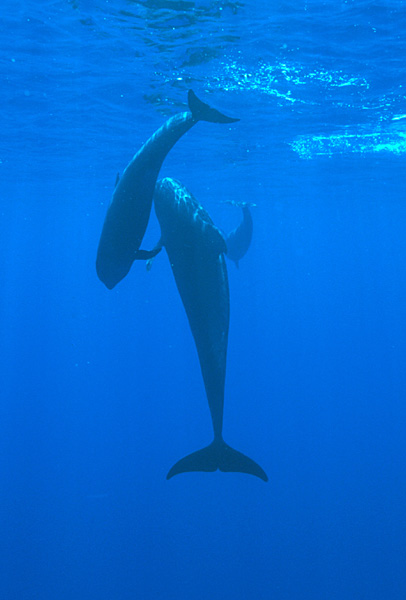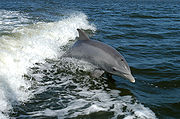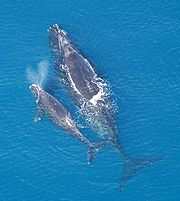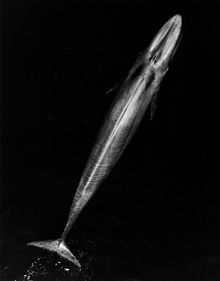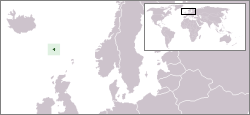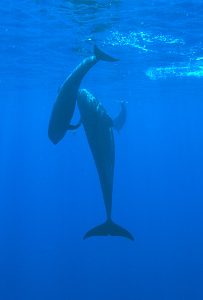Category Archives: Whales & Dolphins
Mass Beaching in New Zealand!
Dozens of whales are facing death, or may already be dead, following a mass beaching in New Zealand.
Somewhere in the vicinity of 60 pilot whales may have met their demise in a remote New Zealand bay, after having beached, and the wild weather has been hindering efforts to get them back out to sea.
A pod of around 80 whales was discovered beached at Spirits Bay, which is situated 200 miles northwest of Auckland, and this is the second such beaching in the past couple of months.
While there were 25 of the whales declared dead on the scene, the Department of Conservation rallied the troops, and managed to get 100 volunteers to aid in saving the rest of the poor creatures.
However, Carolyn Smith, director of the Department of Conservation, has commented that only 24 of the whales is still hanging in there as of Thursday in the morning, however getting an exact number of losses will be hard, given that some of the dead bodies have made their way back to the sea.
She also commented that the heavy rains and the high sea levels were making the job of helping the animals back to the ocean nigh on impossible, and the department is considering calling in trucks to help move them to a more sheltered beach, almost an hour’s drive away.
It’s good to see that someone is willing to put their own comfort aside, it’s freezing out there, and try and help save the whales.
Munster Dolphinarium Caves to Social Cmpaigns and Is Due to Release Dolphins
The WDSF, The Black Fish, and ProWal, which all have been lobbying together to get a dolphinarium in Munster Germany shut down, are clinking their glasses today after an announcement was made that four of the dolphins of said facility are going to be going home by the end of 2012.
While it is not what they had been pushing so hard to get, any victory is a big victory. Considering that this is the first time such activity has actually given rise to action for dolphins, they have been lobbying hard and giving it their all for a few years now, the groups are not going to be looking the gift horse in the mouth.
Arne Feuerhahn, an activist with The Black Fish is hoping for the best: “We will find a respectful and acceptable solution for the future of these four bottlenose dolphins. Transferring them to another concrete prison is not one of them.”
The Munster Zoo, which has been the home of the dolphinarium in question, has given affirmation hat the dolphins will be released by the end of 2012.
This past week a dolphinarium in Hisaronu, Turkey also saw its doors being closed after a long process of lobbying by other animal welfare groups.
It looks to be a bright new world for dolphins, let’s just hope that these claims are true, and that there’s nothing fishy going on here.
South West Turkey Dolphinarium Closed Due to NGO Action
A dolphinarium situated in southwestern Turkey really attracted a lot of attention due to worries about the living conditions the dolphins were subjected to, to such an extent that the venue has been closed and the dolphins released after efforts from civil society organizations.
“This has been an intense but effective campaign but we will only feel truly happy when the [dolphins] are finally back in the wild. This shows how much can be achieved by a collaborative effort and people working together across the world with one collective aim: a real testament to the power of the people. With modern communications and clear aims, we have shown what can be achieved,” a representative of Dolphin Angels, Nichola Chapman commented this past weekend.
Dolphin Angels is just one of the NGOs, nongovernmental organizations, which lobbied to have the dolphins freed. The other NGOs which were involved in the efforts were Born Free, and SAD/DEMAG, and were locked in heated debates for months to have the dolphinarium shut down and release the dolphins.
The project proposing to close down the Dolphinarium and save the dolphins from their cruel captors was initiated by a group of Turks and British expats. By organizing themselves into the Dolphin Angels, and marching against the Dolphin Park, they managed to get many travel companies to stop selling tickets. Then finally the dolphins were freed.. Score one for the dolphins, score zero for the fat cat exploiters of the world.
Boat Owner Gets Slapped on the Wrist for Stalking Whales
A fine of $4,000 was given to a man from Southern Australia, because he invaded the personal space of two whales off the south coast.
For the first time ever in South Australia, Philip Kluske, who resides in the Victor Harbor area, was tried and found guilty, in the Christies Beach Magistrates Court this past Monday, of piloting a vessel within 100 meters of two whales in August of 2009.
Apparently, as the court heard, Mr. Kluske became intrigued with the whales as they approached his boat, and when they swam off he pursued them.
All things considered, Kluske got off light. The maximum penalty that can be given under such circumstances is a $100,000 fine or a two year stint in the pen.
Laurence Haegi, regional conservator of the Department of Environment and Natural Resources has explained that the rules in place are just as important for the welfare of the animals, as they are for the safety of the public.
‘Southern right whales are a vulnerable species, protected under the National Parks and Wildlife Act,’ Dr Haegi said in a statement after the case. ‘Today, the greatest threats to whales are entanglements and boat strikes resulting from human interference”.
‘The regulations are in place to ensure these magnificent animals are not harassed and stressed, often at a time when they are nurturing young calves.’
There you have it… If a whale swims away… Leave it alone… Whale harassment can land you in some pretty hot water.
Dolphins led to Japanese Cove, None Slaughtered
Japanese fishermen led a swarm of dolphins into “the Cove”, a cove which made quite a stir when released in an Oscar-winning documentary, however these Japanese fishermen did not finish the job, and no dolphins were slaughtered.
An inside source in the seaside village of Taiji, which was shown in “The Cove”, has commented that a select few of the dolphins herded were kept to be sold to aquariums, however the majority were set free Friday in the morning. No further details were volunteered.
The decision to let the majority of the dolphin go free is a far cry from the past practice of killing them all.
Sea Shepherd, the conservationist group, has been keeping close tabs on Taiji, with a tiny crew of activists this past week, and has been urging people to aid in the cause of saving the dolphins.
Dolphins swim in large groups, known as pods, in the ocean. The fishermen of Taiji round them up, by making noises which scare them, and lead them to the cove. They then go about selecting the best for sale, and promptly dispense with the rest, stabbing them repeatedly, until the waters run red with blood.
Hopefully this new practice of letting the rest go will catch on, and mother earth will no longer need to shed tears for her lost dolphin children. If the slaughters continue, who knows what will become of the poor dolphins, and the innocents of Taiji.
Right Whales On The Rise: Ship Strikes on Their Way Out
The measures meant to put a stop to the extinction of one of the world’s most endangered marine animals appear to be having an effect, as the population of the North Atlantic right whales rises slightly as the deaths linked to ship strikes decline just a tad.
A research scientist, who has been studying these large, yet graceful animals has said that the numbers they are seeing suggest that the initiatives in both the United States and Canada that make ships steer clear of areas where the animals have been spotted could be helping them to bounce back.
“I think the ship-strike problem has been reduced,” explained a research scientist at the New England Aquarium in Boston, Amy Knowlton.
“Certainly they’re much better protected from ship strikes than they ever have been, so we’re hopeful that the number of mortalities from that sort of thing will reduce.”
Knowlton, who is planning on continuing the study of the right whale over the course of the next few months in the Bay of Fundy, has explained that they could be witnessing signs that the regulations on speed and ship routing have been having a beneficial effect on the right whale populations.
It’s good to know that someone is finally standing up for the “right” thing.
Blue Whales Can Carry a Tune: “Always Calling At The Exact Same Pitch”
It has been discovered that Blue whales are actually able to effectively tune the pitch of their calls with an astounding amount of accuracy, and are able to repeat this process call after call. This discovery was made during a recent study of the Blue whale population in the North Pacific. The results of this study were recently published in the Journal of the Acoustical Society of America.
The authors of the article have hinted that this control in the pitch of their calls could allow them to find a potential mate by simply swimming toward or away from the call.
“Blue whales in a given population have been observed to align their pitch to a common value, but we have now been able to determine just how accurately they are able to do so,” explained professor of Physics at San Francisco State University, Roger Bland.
Professor Bland along with colleagues have analyzed the recordings of over 4,000 Blue whale calls, their focus being the B calls – Those long sad sounding moans that manifest themselves in the second half of the Blue whale song that is distinct in the North Pacific population of Blue whales.
“We found that blue whales are capable of very fine control over the pitch of their call — both in reproducing their call at the same pitch every time and in synchronizing their pitch with others,” Bland went on to explain.
This just goes to show you that humans aren’t the only creatures on the face of the planet that are capable of amazing things… We should pay more attention to nature, we might actually learn something.
The Sapphire Princess was Delayed By…. A Whale?
When the Sapphire Princess pulled into Juneau it was actually stopped in it’s tracks this Past Wednesday, when a dead whale was found on the ship’s bow.
The public affairs officer for National Geographic and Atmospheric Administration, Julie Speegle, has commented that the whale was discovered at just about 8 AM, when the ship was approaching Juneau, new Tracy Arm.
“It apparently became lodged there overnight,” she commented.
When the whale was discovered, the ship contacted the US Coast Guard, who then turned around and told the National Oceanic and Administration of the happenings. Both agencies rushed to the scene.
Speegle has commented that the vessel came to a halt in an area south of Douglas Island, but did not dock while a diving team worked to dislodge the hapless whale. After it was successfully taken off the ship, the whale was immediately transported by tug boat to undergo a necropsy to figure out what caused its death. A press release was then published by Princess Cruises saying that the whale was taken away through the Stephens Passage.
The job of removing the whale was completed and the vessel was then cleared to get on its way just after 3 PM, arriving about an hour afterward.
Speegle explained that this particular species of whale could not be deciphered until they completed the necropsy, “We don’t definitely know but photos from (NOAA) Protected Resources say it appears to be a juvenile humpback.”.
PETA Lobbying for Criminal Charges to be Filed in Sea World Attack

PETA is lobbying for Sea World to be held criminally responsible for the death of Dawn Brancheau. Since that fateful day, PETA has been launching numerous campaigns against Sea World and their operational procedures.
Their first step was to publicly protest outside the theme park’s gates and now they are upping the ante.
PETA officials have been lobbying for the criminal charges, claiming that the attack on Brancheau, from a legal standpoint, is involuntary manslaughter.
“We think that is important for the attorney general to step in, investigate and prosecute this case because otherwise it is only a matter of time before another death or serious injury occurs,” explained PETA’s attorney, Jeff Kerr.
PETA’s case is clearly stated in a huge letter, address to Bill McCollum, the acting Attorney General.
PETA has said that because the officials of Sea World knew that killer whales were dangerous, and the whale which caused Brancheau’s demise was particularly dangerous, that Seaworld – which allowed employees to interact with these creatures – was in fact criminally negligent.
“Working in a dangerous job should not mean that you are exposed on a daily basis to being killed,” Kerr explained.
Of course, the officials at Sea World have a completely different view of the situation, explaining, “The allegations made by PETA today are as baseless … In our experience, both OCSO and the State Attorney conduct their work thoroughly and professionally. PETA’s letter appears to be another example of an organization more interested in media attention than assisting animals in need.”
While it was a terrible tragedy, one has to wonder, is it Sea Worlds’ fault? There is always danger when dealing with wild animals.. But could further steps have been taken?
Undercover Op by Sea Shepherd Exposes Slaughter!
On the 19th of July, some 236 pilot whales met a rather ruthless demise in the town of Klaksvik, located in the Danish Faeroe Islands. Thanks to the excellent work of an undercover operative of Sea Shepherd, who was amongst the locals to document “the grind”, the whole thing was caught on tape! The grind is a very inhumane practice of whaling which involves herding the pods of cetaceans in coves, before stabbing them in the back with a knife!
Peter Hammarstedt, a Sea Shepherd undercover operative who also happens to be the First Mate of Sea Shepherd’s vessel the Bob Barker, had been deeply undercover with these barbaric islanders for seven days when he heard the news of a grind taking place in Klaksvik over the radio. He jumped into his car and raced off to the scene. Unfortunately, he was badly outnumbered, and wasn’t in any way able to stop the massacre, so he caught the whole thing on video instead.
“Pilot whales are known to travel in pods of 200-300 members. Two hundred and thirty-six pilot whales were slaughtered last night in Klaksvik: bulls, pregnant and lactating females, juveniles, and unborn babies still attached to their mothers by the umbilical chord. An entire pod that once swam freely through the North Atlantic has been exterminated in a single blood bath,” explained Hammarstedt.
The local government is claiming that the deaths of these whales are over quickly and painless, however the footage Hammarstedt captured begs to differ.
“One whale had five to six brutal chops to her head,” Hammarstedt began, “The islanders basically used her as a chopping board. Her death would have been slow and extremely painful. Some whales are hacked repeatedly for up to four minutes before they finally die.”
It was also painfully apparent that “the grind” is indiscriminate as well as gruesome.
“Babies had been cut out of their mother’s dead bodies and left to rot on the docks,” reported Hammarstedt, who got quite a few shots of dead babies and even fetuses. “Pilot whale groups are strongly matriarchal; I can’t imagine the fear and panic that these mothers must have felt as their families were wiped out in front of them.”
The Faroese pilot what grind is very similar to the yearly Taiji dolphin slaughter perpetrated in Japan. The slaughter of dolphins is very well documented in the bone chilling documentary, “The Cove”. The thing that sets apart the two activities is that there are more than 18 different coves in the Faeroes where the grind can happen, as opposed to the single cove in Taiji. This makes it almost impossible to find out where the killings will take place, or to get there in time to help prevent this heinous act.
Now that this barbaric act has been brought to light, and into the public eye, one can only hope that there will be steps taken to help avoid this kind of thing in the future.
Anyone who wants to know more or see pictures from the slaughter can visit http://www.seashepherd.org/
